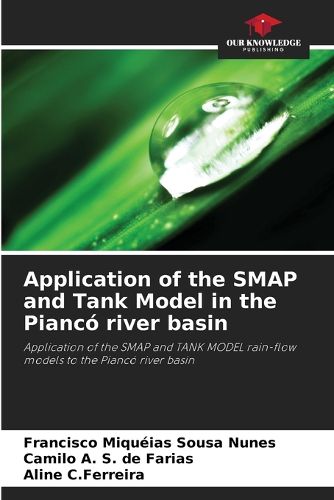Readings Newsletter
Become a Readings Member to make your shopping experience even easier.
Sign in or sign up for free!
You’re not far away from qualifying for FREE standard shipping within Australia
You’ve qualified for FREE standard shipping within Australia
The cart is loading…






This title is printed to order. This book may have been self-published. If so, we cannot guarantee the quality of the content. In the main most books will have gone through the editing process however some may not. We therefore suggest that you be aware of this before ordering this book. If in doubt check either the author or publisher’s details as we are unable to accept any returns unless they are faulty. Please contact us if you have any questions.
This work consists of the calibration and validation of the SMAP (Lopes et al., 1982) and Tank Model (Sugawara, 1979) models for simulating monthly flows in the Pianco river basin, which is located in the state of Paraiba. To calibrate and validate both models, which are classified as conceptual, concentrated and deterministic, rainfall, potential evaporation and average monthly flow data from the period 1964 to 1988 were used. The model parameters were automatically calibrated using genetic algorithms. The calibration results considering the Nash-Sutcliffe coefficient (NASH) were 0.73 and 0.60 for the SMAP and Tank Model, respectively. The NASH coefficient was 0.69 for the validation data set using SMAP and 0.45 with Tank Model. Given the effectiveness and superiority of the SMAP over the Tank Model for simulating monthly flows in the Pianco River, it is hoped that this study will provide support for better water management in semi-arid regions.
$9.00 standard shipping within Australia
FREE standard shipping within Australia for orders over $100.00
Express & International shipping calculated at checkout
Stock availability can be subject to change without notice. We recommend calling the shop or contacting our online team to check availability of low stock items. Please see our Shopping Online page for more details.
This title is printed to order. This book may have been self-published. If so, we cannot guarantee the quality of the content. In the main most books will have gone through the editing process however some may not. We therefore suggest that you be aware of this before ordering this book. If in doubt check either the author or publisher’s details as we are unable to accept any returns unless they are faulty. Please contact us if you have any questions.
This work consists of the calibration and validation of the SMAP (Lopes et al., 1982) and Tank Model (Sugawara, 1979) models for simulating monthly flows in the Pianco river basin, which is located in the state of Paraiba. To calibrate and validate both models, which are classified as conceptual, concentrated and deterministic, rainfall, potential evaporation and average monthly flow data from the period 1964 to 1988 were used. The model parameters were automatically calibrated using genetic algorithms. The calibration results considering the Nash-Sutcliffe coefficient (NASH) were 0.73 and 0.60 for the SMAP and Tank Model, respectively. The NASH coefficient was 0.69 for the validation data set using SMAP and 0.45 with Tank Model. Given the effectiveness and superiority of the SMAP over the Tank Model for simulating monthly flows in the Pianco River, it is hoped that this study will provide support for better water management in semi-arid regions.